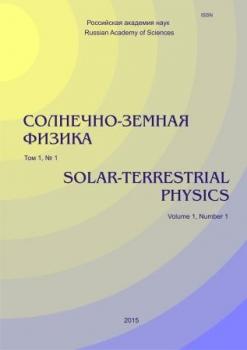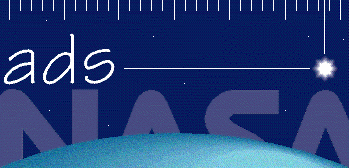Pekin, China
Pekin, China
Pekin, China
Pekin, China
Pekin, China
N'yuark, United States of America
N'yuark, United States of America
N'yuark, United States of America
Kislovodsk, Russian Federation
National Astronomical Observatories, Chinese Academy of Sciences
Irkutsk, Russian Federation
Irkutsk, Russian Federation
Irkutsk, Russian Federation
This article introduces our ongoing project “Construction of a Century Solar Chromosphere Data Set for Solar Activity Related Research”. Solar activities are the major sources of space weather that affects human lives. Some of the serious space weather consequences, for instance, include interruption of space communication and navigation, compromising the safety of astronauts and satellites, and damaging power grids. Therefore, the solar activity research has both scientific and social impacts. The major database is built up from digitized and standardized film data obtained by several observatories around the world and covers a timespan more than 100 years. After careful calibration, we will develop feature extraction and data mining tools and provide them together with the comprehensive database for the astronomical community. Our final goal is to address several physical issues: filament behavior in solar cycles, abnormal behavior of solar cycle 24, large-scale solar eruptions, and sympathetic remote brightenings. Significant progresses are expected in data mining algorithms and software development, which will benefit the scientific analysis and eventually advance our understanding of solar cycles.
solar cycle, Hα, filament, multi-parameter calibration, standardization, feature extraction, solar activity pattern
BACKGROUND
The Sun is the only main sequence star with periodic activities that dominates the Sun-Earth environment and has impacts on human lives. Strong solar activities such as CMEs can affect spacecraft systems, disrupt communications, and even damage ground-based power systems. To understand and forecast the effects of solar activity on Earth’s environment remains one of the main research problems in solar physics. However, our understanding of the fundamental physics of solar activities is still poor. For example, the mechanism of formation of solar cycle variation is unclear so far. In the literature, the Maunder minimum is well-known, and the abnormally depressed solar activity between cycles 23 and 24 has recently started to be discussed. However, their occurrences are big puzzles to solar physicists. On the other hand, the existing observational data are not well calibrated and organized to serve efficient and precise investigations.
In particular, long-term observations are needed to study variation of solar activities in multiple solar cycles. Such activities include large-scale eruptions, Moreton waves, sympathetic eruptions, remote brightening [Tang, Moore, 1982], coronal dimming, filament oscillations, and so on. Systematic studies of these large-scale events are essential to understand the topological magnetic structures and hence the eruptive events.
The Moreton wave is a disturbance propagated by a wave and generally accompanied by a flare. It was first detected on Hα filtergrams by Moreton, Ramsey [1960]. So far, since Moreton wave events are not commonly observed, it is necessary to proceed to a more systematic analysis by taking advantage of the large Hα data sample all over the world.
The planned database is extremely useful in investigating large-scale helicity patterns, which are believed to have a close relationship with solar activities. For example, it can be used to study the possible sign reversal problem in the hemisphere helicity rule. (e.g., [Bao, Ai, Zhang, 2000; Hagino, Sakurai, 2002; Pevtsov et al, 2008]).
It is necessary to establish a complete filament catalog in multiple solar cycles. The statistics study of filament properties in many cycles is restricted by discontinuous observations, inconsistent calibration, and incomplete samples from different instruments. It is well known that filaments typically fall into three categories [Hansen R., Hansen S., 1975] according to their latitudes. We pay attention to large-scale filaments in middle and high latitudes as they are high contrast features and their properties are more closely connected with solar cycle problems [Brajsa et al. 1990]. Pevtsov, Balasubramaniam, Rogers [2003] studied chirality of chromospheric filaments, using a limited data set of scanned images from the NSO/SP database. In this project, we further promote the research into solar helicity and chirality problems (e.g., [Martin, Bilimoria, Tracadas, 1994; Rust, Martin, 1994; Pevtsov, Canfield, Metcalf, 1995]), through a complete, unified, and calibrated digitized full-disk Hα data set.
1. Aschwanden M.J. Image Processing Techniques and Feature Recognition in Solar Physics. Solar Phys. 2010, vol. 262, pp. 235-275.
2. Bao S.D., Ai G.X., Zhang H.Q. The Hemispheric Sign Rule of Current Helicity During the Rising Phase of Cycle 23, J. Astrophys. Astron. 2000, vol. 21, pp. 303-306.
3. Brajsa R, Vršnak B, Rundjak V., Schroll A. Polar Crown Filaments and Solar Differential Rotation at High Latitudes. IAU Colloquim. 1990, pp. 117-293.
4. Cui Zhao, GangHua Lin, YuanYong Deng, Xiao Yang. Automatic Recognition of Sunspots in HSOS Full-Disk Solar Images. Publications of the Astronomical Society of Australia. 2016, vol. 33. DOI:https://doi.org/10.1017/pasa.2016.17.
5. Ermolli I., Solanki S.K., Tlatov A.G., Krivova N.A., Ulrich R.K., Singh J. Comparison among CaII K spectroheliogram time series with an application to solar activity studies. Astrophys. J. 2009, vol. 698, pp. 1000-1009.
6. Hansen R., Hansen S. Global distribution of filaments during solar cycle No. 20. Sol. Phys. 1975, vol. 44, pp. 225-230.
7. Hagino M., Sakurai T. Hemispheric helicity asymmetry in active regions for solar cycle 21-23. Proc. COSPAR Colloquia Ser. 2002, vol. 147.
8. Hao Q., Fang C., Chen P.F. Developing an advanced automated method for solar filament recognition and its scientific application to a solar cycle of MLSO Hα data Solar Phys. 2013, vol. 286, pp. 385-404.
9. Moreton G.E., Ramsey H.E. Recent observations of dynamical phenomena associated with solar flares. Publications of the Astronomical Society of the Pacific. 1960, vol. 72, pp. 357-358.
10. Martin S.F., Bilimoria R., Tracadas P.W. Magnetic field configurations basic to filament channels and filaments. Solar surface magnetism. NATO Advanced Science Institutes (ASI) Ser. C.: Mathematical and Physical Sciences, Proc. NATO Advanced Research Workshop. 1994, vol. 303.
11. Pevtsov A.A., Canfield R.C., Metcalf T.R. Latitudinal variation of helicity of photospheric magnetic fields. Astrophys. J. Lett. 1995, vol. 440, pp. L109-112.
12. Pevtsov A.A., Balasubramaniam K.S., Rogers J.W. Chirality of chromospheric filaments. Astrophys. J. 2003, vol. 595, pp. 500-505.
13. Pevtsov A.A., Canfield R.C., Sakurai T., Hagino M. On the solar cycle variation of the hemispheric helicity rule. Astrophys. J. 2008, vol. 677, no. 1, pp. 719-722.
14. Qu M., Shih F.Y., Jing J., Wang H. Automatic solar flare detection using MLP, RBF, and SVM. Solar Phys. 2003, vol. 217, pp. 157-172. DOI:https://doi.org/10.1007/s11207-013-0285-9.
15. Rust D.M., Martin S.F. A correlation between sunspot whirls and filament type. Astronomical Society of the Pacific Conference Ser. 1994, vol. 68, pp. 337.
16. Sheng Zheng, Xiangyun Zeng, Ganghua Lin, Cui Zhao, Yongli Feng, Jinping Tao, Daoyuan Zhu, Li Xiong. Sunspot drawing handwritten character recognition method based on deep learning. New Astronomy. 2016, vol. 45, pp. 54-59.
17. Tang F., Moore R.L. Remote flare brightenings and type III reverse slope bursts. Solar Phys. 1982, vol. 77, pp. 263-276.
18. Yuan Y. Shih F.Y., Jing J., Wang H., Chae J. Automatic Solar Filament Segmentation and Characterization. Solar Phys. 2011, vol. 272, pp. 101. DOI:https://doi.org/10.1007/s11207-011-9798-2.
19. Zharkova V.V. et al. A full disk image standardization of the synoptic solar observation at the Meudon. ESA SP-506. 2002, vol. 2, pp. 975-978.



















